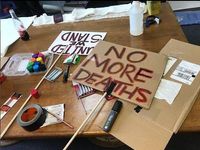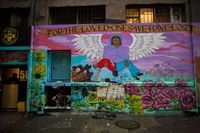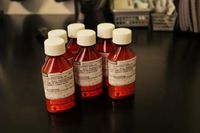Touting the newly released Risk Mitigation (Prescribing) Guidelines (RMG) as “safe supply” is a misleading way of referring to what is basically an expanded range of pharmaceutical options for people with substance use disorder delivered through existing addiction medicine models such as Opioid Agonist Treatment (OAT).
Most (admittedly, not all) of the medications available under the guideline have already been used for some decades. The changes made by the release of the RMG are primarily the availability of hydromorphone (Dilaudid) and an expanded range of stimulant options. However, hydromorphone has already been available for a few years to patients in Vancouver and Victoria as therapeutic options, making this therapy less innovative than it originally seemed to be. Delivering RMG via the OAT model reproduces the problems that have already been encountered by the tens of thousands of people in the past two decades.
The increased access to stimulant medications specifically for people who use drugs is a relatively novel intervention, as this type of replacement therapy for stimulants is less common. Unfortunately, the range of options for either stimulants or opioids made available through the guideline aren’t adequate for everyone and fails to acknowledge the tolerances of people who use drugs as well as their preferred routes of consumption. In addition to the dosages, often falling short of meeting people’s needs, the currently available medications do not include smokeable options - which is concerning as the majority of reported overdoses are a result of opioids being smoked, not injected.
Furthermore, most prescribers are refusing to offer RMG meds without co-prescribing OAT meds, which discounts individual needs and lived experience. This trend of co-prescribing coerces people into processes that a vast number of them have already undergone with negative experiences. For most of us, it feels like jumping through administrative hoops for seemingly no reason, with little or no explanation. This violates principles of harm reduction, erodes trust, and ultimately replicates medicalized harms many people who use drugs have faced in past interactions with the healthcare system.
In many places in Canada, particularly in British Columbia (BC), the illicit drug supply is irrevocably tainted with fentanyl – which is said to be orders of magnitude stronger than either the previously available heroin or the pharmaceutical options being offered under RMG. This creates a gap between the effect the medication offers and what the patient needs or wants. As a result, people are still resorting to the street supply to meet that need, as is often the case with OAT. This puts them both at risk for overdose and also increases their risk of contracting COVID-19, both of which the intervention is intended to mitigate.
Regarding COVID, the guideline’s eligibility criteria include a provision that the intervention is intended for people at risk or with a confirmed case of the virus. While this could presumably include anyone given the nature of the pandemic, the specific criteria regarding risk of COVID has led, in this writer’s experience, to an uneven understanding of patient eligibility by prescribers across health authorities, with some specifically requiring the patient to be under self-quarantine to be eligible, and others using it as a last-ditch attempt to stem the tide of overdose deaths.
Either way, accessing RMG requires having a regular physician or other healthcare provider with prescribing authority. In a number of communities in BC (primarily rural or remote) there is a critical shortage of doctors, either General Physicians or “addictions medicine” physicians. As a result, people on the lowest level of the social strata, mostly people without stable housing or employment, will face difficulties in accessing this intervention. This disparity in accessibility gets worse when considering the lack of available and willing prescribers in rural and remote communities.
Additionally, when people perceived by healthcare workers as “homeless” or “drug users” try to access medical care, they are often met with treatment deeply rooted in, and informed by, stigma. Impatience on the part of healthcare providers, a lack of respect for the patient’s knowledge of their own body and condition, mistrust, and other unwelcoming behaviours have been experienced and reported both in research and anecdotally by people who use drugs. A young woman in Nova Scotia was treated so badly by hospital staff that she refused to seek care for an infection and passed away from sepsis. This is not an isolated incident and is symptomatic of a pattern of regular maltreatment of people who use drugs by healthcare providers.
Accessing treatment is a process of navigating stigma that is exacerbated when the patient is racialized. Indigenous patients, either people who use drugs or not, are often suspected of being intoxicated when they are not and have experienced overt racism and horrific treatment in hospitals and other healthcare settings. This results in a climate of care that is legitimately perceived as unfriendly and unwelcoming to the most marginalized among us – racialized citizens, poor people, people who use illicit substances, and people without stable housing.
Furthermore, using the OAT model requires the pharmacy system to dispense the drugs. Despite the provisions made in the guideline for delivery and in some cases, weekly carries of the medication, recent research shows that 94% of RMG prescriptions require daily witnessed pharmacy dispensation. As reported with daily witnessed dispensation of OAT medications, this creates a situation in which people are required to be at their pharmacy every day, interfering with their daily lives.
By utilizing the existing OAT model within the addiction medicine system to administer the purported “safe supply”, it ensures that a large portion of the population who would most benefit from the intervention will not find it accessible.
A true safe supply, as defined by the Canadian Association of People who Use Drugs (CAPUD) is “a legal and regulated supply of drugs with mind/body altering properties that traditionally have been accessible only through the illicit drug market”. This would consist of the actual substances that people are using now, but regulated and tested, offered in a welcoming environment free of stigma and judgment.
This includes unpopular “hard” non-opioid drugs, such as crystal meth, powder cocaine, and crack cocaine. If the actual substances that people want were made available in formats suitable for both injection and smoking, it would, quite simply, reduce overdose deaths.
As an emergency intervention, developed quickly and created to use existing mechanisms, RMG is a half-step in the right direction, but it ultimately fails to live up to the name “safe supply”.




